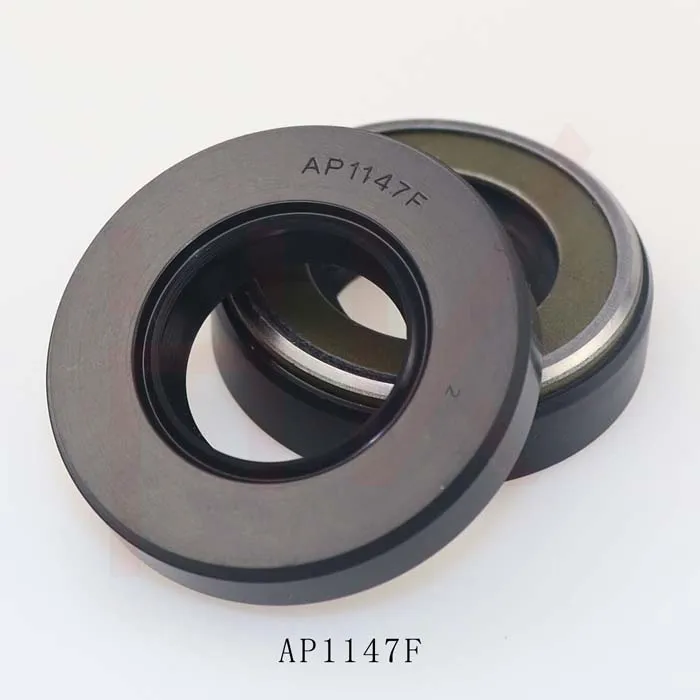דצמ . 21, 2024 20:12 Back to list
hydraulic cylinder seal kit material
Understanding Hydraulic Cylinder Seal Kit Materials
Hydraulic systems are crucial components in various industries, including construction, manufacturing, and automotive. The efficiency and longevity of these systems largely depend on the integrity of their components, one of the most vital being the hydraulic cylinder seal. The seal kit plays a pivotal role in preventing fluid leakage, ensuring optimal performance, and maintaining system pressure. Therefore, understanding the materials used in hydraulic cylinder seal kits is essential for selecting the right components for specific applications.
Key Materials in Hydraulic Cylinder Seal Kits
1. Nitrile Rubber (NBR) Nitrile rubber is one of the most commonly used materials for hydraulic seals. It offers excellent resistance to petroleum-based fluids, making it suitable for various hydraulic applications. NBR seals can withstand temperatures ranging from -40°C to +100°C, providing a reliable option for many standard hydraulic systems. However, they have limited resistance to ozone and aging, which can reduce their lifespan in certain environments.
2. Polyurethane (PU) Polyurethane seals are renowned for their exceptional wear resistance and tear strength. These seals can endure dynamic movements and provide a tight seal, significantly reducing the chances of leakage. Polyurethane is often used in high-pressure applications and can operate in temperatures ranging from -30°C to +90°C. Its durability makes it a popular choice in harsh environments, but it may not be suitable for all fluid types, especially those with high water content.
3. Fluoroelastomer (FPM/Viton) Fluoroelastomers, commonly known by the brand name Viton, are premium materials that offer superior chemical resistance. They are ideal for applications involving aggressive fluids, including certain oils and solvents. Fluoroelastomers can withstand a wider temperature range, typically from -20°C to +200°C. While they are more expensive than NBR or PU, their longevity in challenging environments often justifies the higher cost.
4. Polyacrylate (ACM) Polyacrylate seals are particularly advantageous when dealing with high-temperature applications. They excel in temperature ranges from -20°C to +150°C and are resistant to a variety of fluids, including synthetic oils. Polyacrylate is a suitable choice for conditions where other materials might fail, especially in high-operating temperature environments.
5. PTFE (Teflon) PTFE, commonly known as Teflon, is another material used in hydraulic seals, particularly when high chemical stability and a wide temperature range are needed. PTFE seals can operate between -200°C and +260°C, making them versatile in extreme conditions. However, they may not be suitable for high-pressure applications due to their low friction properties, which can lead to wear when subjected to dynamic movements.
hydraulic cylinder seal kit material

Considerations for Selecting Seal Kit Materials
When selecting a hydraulic cylinder seal kit, several factors must be considered
- Fluid Compatibility It's crucial to ensure that the seal material chosen is compatible with the fluids used in the hydraulic system. Using incompatible materials can lead to premature seal failure.
- Temperature Range Each material has a specific temperature limit. Understanding the operating environment's temperature fluctuations can help in choosing the right seal that can withstand these conditions.
- Pressure Ratings Different materials have varying capabilities regarding pressure. It’s essential to match the seal’s pressure tolerance to the system’s requirements.
- Environmental Conditions Factors like exposure to UV light, ozone, and extreme weather conditions can affect seal durability. Choosing a material that withstands these conditions enhances the seal's lifespan.
Conclusion
In conclusion, the choice of material for hydraulic cylinder seal kits is fundamental to the performance and reliability of hydraulic systems. By understanding the properties of different materials—such as nitrile rubber, polyurethane, fluoroelastomer, polyacrylate, and PTFE—users can make informed decisions. It is vital to consider fluid compatibility, temperature ranges, pressure ratings, and environmental conditions to select the most appropriate seal kit material for specific applications. By doing so, businesses can ensure the efficiency and longevity of their hydraulic systems, leading to reduced downtime and increased productivity.
-
TCN Oil Seal Metal Ring Reinforcement for Heavy Machinery
NewsJul.25,2025
-
Rotary Lip Seal Spring-Loaded Design for High-Speed Applications
NewsJul.25,2025
-
Hydraulic Cylinder Seals Polyurethane Material for High-Impact Jobs
NewsJul.25,2025
-
High Pressure Oil Seal Polyurethane Coating Wear Resistance
NewsJul.25,2025
-
Dust Proof Seal Double Lip Design for Construction Equipment
NewsJul.25,2025
-
Hub Seal Polyurethane Wear Resistance in Agricultural Vehicles
NewsJul.25,2025
-
The Trans-formative Journey of Wheel Hub Oil Seals
NewsJun.06,2025
Products categories
















